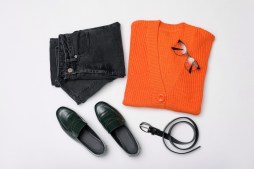The Ultimate Guide: Tips for Wearing Vintage Clothing with Confidence

Vintage clothing has a unique charm that sets it apart from modern fashion. From the timeless elegance of a 1950s cocktail dress to the bold prints of 1970s bohemian style, wearing vintage pieces allows you to make a statement and stand out from the crowd. However, incorporating vintage items into your wardrobe can be tricky if you’re unsure of how to style them. To help you navigate the world of vintage fashion, we’ve compiled a list of essential tips for wearing vintage clothing with confidence.
Understanding Vintage Fashion
Vintage clothing refers to garments that were produced between the 1920s and 1980s. These pieces have stood the test of time and often possess intricate details, superior craftsmanship, and unique design elements that are hard to find in contemporary fashion. Understanding the different eras within vintage fashion is key to successfully incorporating these items into your wardrobe.
One important aspect to consider is silhouette. Silhouettes varied greatly throughout different decades, so it’s crucial to choose styles that flatter your body shape. For example, if you have an hourglass figure, opt for fitted dresses from the 1950s or high-waisted pants from the 1940s.
Another aspect to keep in mind is fabric quality. Vintage clothing may have been made using different materials than what we commonly see today. Familiarize yourself with fabrics used in different eras and learn how they feel and wear over time. This knowledge will help you make informed decisions when shopping for vintage pieces.
Mixing Vintage with Modern
Incorporating vintage clothing into your everyday outfits doesn’t mean you have to dress head-to-toe in period attire. Mixing vintage pieces with modern garments creates a balanced and contemporary look while still paying homage to past styles.
Start by selecting one standout vintage piece as the focal point of your outfit. This could be a vibrant 1960s jacket or a delicate lace blouse from the 1930s. Pair it with modern basics like jeans, t-shirts, or simple skirts to let the vintage item shine.
Accessories are also a great way to introduce vintage elements into your ensemble. A statement belt from the 1970s or a pair of retro sunglasses can instantly elevate an otherwise ordinary outfit. Remember to choose accessories that complement the overall aesthetic and era of your vintage piece.
Caring for Vintage Clothing
Vintage clothing requires special care to ensure its longevity. These garments have already survived decades, so it’s important to handle them with care to keep them in good condition.
First and foremost, always check the care label or any available information about washing instructions before cleaning your vintage pieces. Some fabrics may be delicate or require specific cleaning methods. When in doubt, opt for professional dry cleaning or hand-washing with mild detergent.
Proper storage is also crucial in preserving vintage clothing. Avoid plastic bags that can trap moisture and promote mold growth. Instead, store your garments in breathable fabric garment bags or acid-free tissue paper to protect them from dust and light damage.
Lastly, be mindful of how often you wear your vintage pieces. Frequent use can cause wear and tear, so consider rotating them with other items in your wardrobe to extend their lifespan.
Embracing Individuality
One of the joys of wearing vintage clothing is the opportunity to express your individuality through fashion. Vintage pieces often have stories behind them – they’ve been loved and cherished by previous owners – and wearing them allows you to carry on their legacy.
Don’t be afraid to experiment with different styles and eras within vintage fashion. Mix prints, play with colors, and embrace unique cuts that may not be as prevalent in contemporary fashion trends. Letting your personality shine through will give you confidence when wearing vintage clothing.
Remember, confidence is key when it comes to rocking vintage fashion. Embrace your personal style, experiment with different looks, and most importantly, have fun with your vintage treasures. By following these tips, you’ll be well on your way to becoming a vintage fashionista.
This text was generated using a large language model, and select text has been reviewed and moderated for purposes such as readability.





